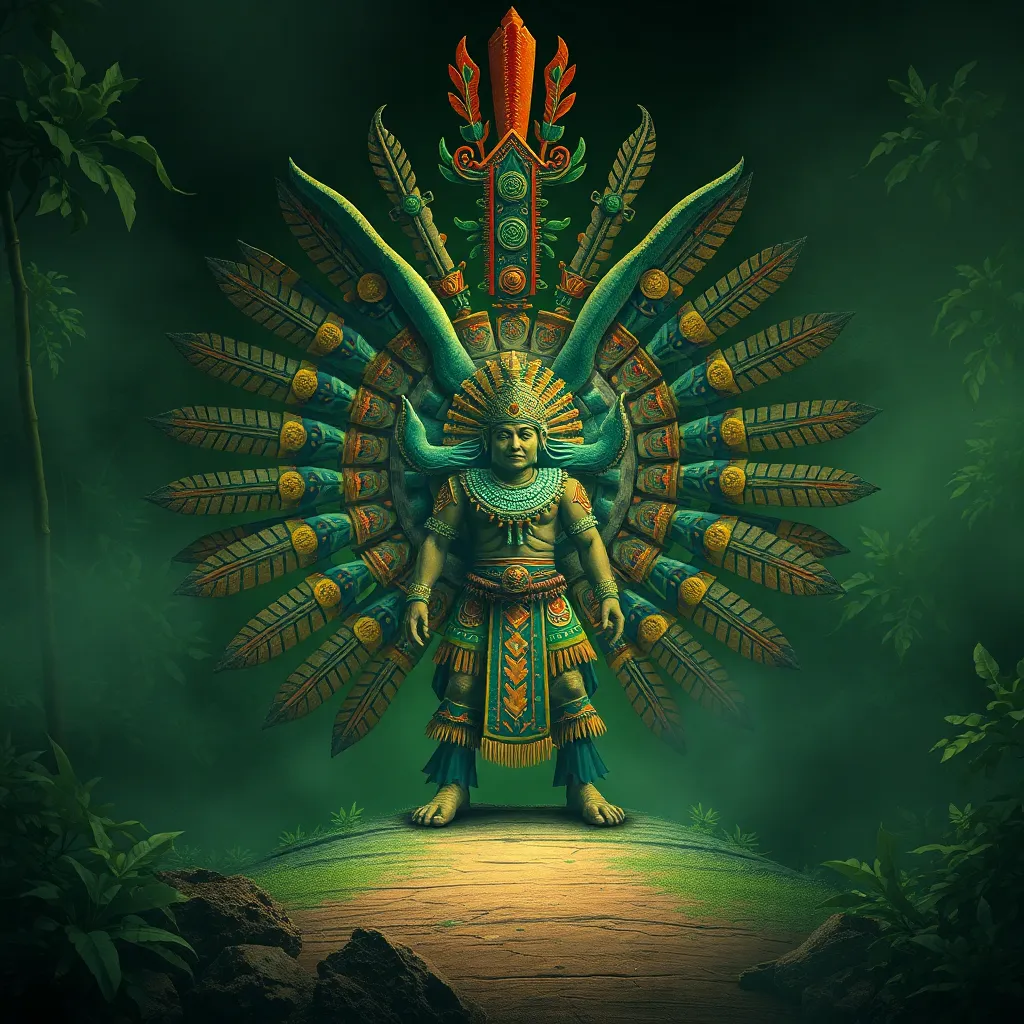Ahuizotl: A Study of the Influence of Nature on Aztec Culture
I. Introduction
The Ahuizotl is a fascinating creature from Aztec mythology, known for its unique characteristics and significant role in the cultural narratives of ancient Mesoamerica. Defined as a water-dwelling creature with features reminiscent of both a dog and an otter, the Ahuizotl embodies the intricate relationship between the Aztecs and their natural surroundings.
Nature held a paramount place in Aztec belief systems, influencing their myths, practices, and daily life. This article aims to explore the role of the Ahuizotl in Aztec mythology, its connections to the environment, and its implications for understanding the broader cultural landscape of the Aztec civilization.
II. The Ahuizotl in Aztec Mythology
The Ahuizotl is depicted as a creature with a dog-like head, a long, flexible body, and a hand on the end of its tail, which it uses to drag its victims underwater. The physical characteristics of the Ahuizotl highlight its connection to both terrestrial and aquatic realms, symbolizing the duality of life and death.
In Aztec creation myths, the Ahuizotl plays a pivotal role in the narratives surrounding the origins of water and life. It is often associated with bodies of water, emphasizing the belief that water is a source of both sustenance and danger. As a symbol of nature, the Ahuizotl represents the unpredictability of the natural world, reminding the Aztecs of the delicate balance they must maintain with their environment.
III. The Natural Environment of the Aztecs
The Aztec Empire was characterized by a diverse geographic landscape that included mountains, valleys, and extensive water systems. This biodiversity profoundly influenced their culture, from agriculture to religious practices.
The relationship between the Aztecs and their environment was symbiotic, as they relied on the land and water for resources while also respecting its power. Water bodies, in particular, were central to Aztec life, with lakes, rivers, and canals serving as vital sources of food, transportation, and agricultural irrigation.
Key aspects of this relationship include:
- Utilization of lake systems for agriculture, such as the chinampas, or floating gardens.
- Spiritual beliefs surrounding water deities that governed rainfall and rivers.
- Seasonal cycles that dictated farming and harvesting practices.
IV. Ahuizotl and Water as a Life Force
Water was not only essential for agriculture and daily activities but was also revered as a life force in Aztec culture. The Ahuizotl serves as a guardian of water bodies, symbolizing the protective and destructive aspects of water.
The significance of water can be observed through the following points:
- Water was critical for the cultivation of crops like maize, beans, and squash, which formed the basis of the Aztec diet.
- The Ahuizotl’s association with water reflects the reverence for aquatic deities such as Tlaloc, the god of rain, who was believed to control agricultural fertility.
- Myths surrounding water deities often include stories of sacrifice and offerings to appease these powerful beings, further underscoring the relationship between water and life.
V. Ahuizotl’s Representation in Art and Literature
Artistic depictions of the Ahuizotl can be found in various Aztec codices, illustrating its significance in their mythology. These representations often highlight its aquatic nature and fierce demeanor, serving as both a warning and a symbol of respect for the forces of nature.
Additionally, the Ahuizotl is prevalent in oral traditions, where stories are passed down through generations, emphasizing its role in cautionary tales that reflect the consequences of neglecting the environment.
The influence of these artistic and literary representations extends to contemporary understanding of Aztec culture, revealing how the Ahuizotl embodies the complexities of human interaction with nature.
VI. The Ahuizotl and Human Interaction with Nature
The Ahuizotl plays a critical role in cautionary tales that highlight the importance of respecting nature. These stories often depict the consequences faced by those who disregard the natural world, serving as reminders to maintain harmony with the environment.
Reflecting the Aztecs’ deep respect for nature, these narratives emphasize:
- The need for sustainable practices in agriculture and resource management.
- The importance of acknowledging the power of natural elements, such as water and wildlife.
- Modern implications of the Ahuizotl myth in environmental discourse, suggesting that ancient wisdom can inform contemporary environmental practices.
VII. Comparative Analysis with Other Mesoamerican Cultures
When comparing the Ahuizotl to similar creatures in Maya and other Mesoamerican mythologies, several similarities and differences emerge. Like the Ahuizotl, many cultures feature water deities or creatures that embody nature’s duality.
Similarities include:
- Mythical creatures associated with water, such as the Maya’s “Pakal” and “Xibalba.”
- The shared belief in the protective and destructive aspects of water in various creation myths.
Differences may arise in the portrayal of these creatures and their significance within each culture. For example, the Ahuizotl is often portrayed as a more malevolent figure compared to some benevolent water deities in other traditions.
This comparative analysis enriches our understanding of how nature influenced not just Aztec spirituality but also the broader context of Mesoamerican cultures.
VIII. Conclusion
In summary, the Ahuizotl holds a significant place in Aztec culture, serving as a powerful symbol of the relationship between humanity and nature. Its representation in mythology, art, and literature underscores the enduring legacy of nature in Aztec belief systems.
The Ahuizotl continues to resonate in contemporary discussions about environmental respect and conservation, reminding us of the importance of maintaining a harmonious relationship with the natural world. As we explore the complexities of culture and nature, the Ahuizotl remains a poignant reminder of the lessons that the past can teach us today.



